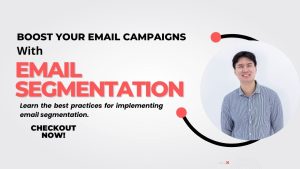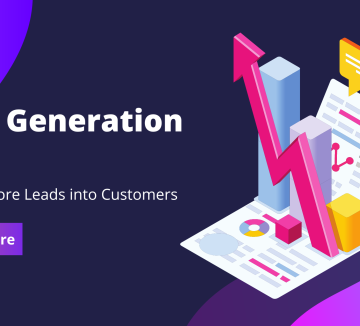Last Updated on May 4, 2023 by David
Email segmentation is a highly effective strategy that businesses can use to increase the relevance of their email campaigns, improve engagement rates, and ultimately drive more sales.
You can create more personalized and targeted communication by dividing your email list into smaller groups or segments based on specific criteria and tailoring your email content and messaging to each segment.
In this article, we will delve into the power of email segmentation and explore how to use it to boost your campaigns.
We’ll cover the importance of understanding your audience, the different types of email segmentation, best practices for implementation, examples of effective email segmentation, and tools and platforms for email segmentation.
We’ll also discuss the challenges businesses may face when implementing email segmentation and provide tips for overcoming them.
You May Also Like:
- Marketing Email Subject Lines – The Secret To Successful Campaigns
- Top 10 Email Marketing Automation Tools for Successful Campaigns
- Top 5 Email Design Trends to Try Now – Stand Out Today!
Why is Email Segmentation Important?
Simply sending out mass emails to your entire email list is not enough to drive conversions and achieve business goals. This is where email segmentation comes in.
Email segmentation is the process of dividing your email list into smaller groups or segments based on specific criteria such as demographics, behavior, geographic location, or psychographic.
By segmenting your email list, you can send targeted content and messaging that is relevant to each segment, creating a more personalized and engaging experience for your subscribers.
Here are some of the key reasons why email segmentation is important:
Email List Segmentation Increases Relevance and Engagement
Segmenting email lists increases relevance and engagement by allowing businesses to send more personalized and targeted content to their subscribers.
By dividing their email list into smaller groups or segments based on specific criteria, such as demographics, behavior, geographic location, or psychographics, businesses can create more tailored email content and messaging that is relevant to each segment.
This, in turn, leads to higher engagement rates, as subscribers are more likely to be interested in the content they receive.
When subscribers receive content that is relevant to their interests or needs, they are more likely to open, read, and act on the email, ultimately driving more sales and conversions for the business.
By focusing on relevance and engagement through email segmentation, businesses can establish stronger relationships with their subscribers, build trust and loyalty, and ultimately achieve their marketing goals.
Improve Open and Click-Through Rates With Email Segmentation
Email segmentation improves open and click-through rates by sending targeted and personalized content to subscribers.
When businesses send relevant and interesting content to their subscribers, they are more likely to open the email and engage with the content.
By segmenting their email list based on specific criteria, such as demographics or behavior, businesses can send content that is tailored to the interests and needs of each segment, making it more likely that subscribers will engage with the content.
Additionally, segmentation allows businesses to send more focused and specific calls to action (CTAs), which can improve click-through rates.
By aligning the CTA with the specific segment’s needs or interests, businesses can increase the likelihood of subscribers taking the desired action, such as making a purchase or signing up for a service.
Email segmentation improves open and click-through rates by providing subscribers with content that is relevant and interesting to them, and by making it easier for subscribers to take the desired action.
Increases Conversions and Sales
Segmented email lists increase conversions and sales by allowing businesses to send targeted and personalized content to their subscribers.
By segmenting your email list based on specific criteria such as demographics, behavior, geographic location, or psychographics, you can send content that is relevant to each segment, creating a more personalized and engaging experience for your subscribers.
When subscribers receive content that is relevant to their interests or needs, they are more likely to take action, whether it be making a purchase, signing up for a service, or requesting more information.
This targeted approach can lead to higher conversion rates and increased sales.
Email segmentation can also help businesses identify and target high-value customers or prospects, allowing them to create more effective and efficient marketing campaigns.
By targeting the right audience with the right message at the right time, businesses can maximize the effectiveness of their email marketing campaigns and ultimately drive more conversions and sales.
Reduces Unsubscribes and Spam Complaints
Segmenting email lists helps businesses reduce unsubscribes and spam complaints by sending relevant and targeted content to subscribers.
When businesses send non-segmented, mass emails to their entire email list, they run the risk of sending irrelevant or uninteresting content to some subscribers.
This can lead to subscribers feeling overwhelmed, annoyed, or disinterested, resulting in them unsubscribing or marking emails as spam.
With email segmentation, businesses can send content that is relevant to each segment, reducing the likelihood of subscribers feeling overwhelmed or disinterested.
By tailoring content to specific interests, needs, or behaviors, businesses can improve the overall email experience for subscribers, increasing the likelihood of them staying subscribed and engaged with future emails.
Moreover, segmentation allows businesses better to control the frequency and timing of their emails, reducing the likelihood of subscribers feeling bombarded or annoyed with excessive emails.
By sending targeted and relevant content at the right time, businesses can build trust and loyalty with their subscribers, reducing the likelihood of spam complaints and unsubscribes.
Email Segmentation Reveals Valuable Insights
Segmenting email lists provides valuable insights into your audience by allowing you to better understand their interests, needs, and behaviors.
By segmenting your email list based on specific criteria such as demographics, behavior, geographic location, or psychographics, you can tailor your content to each segment and track how they engage with your emails.
For example, you may segment your email list based on geographic location and track how subscribers in each location respond to your content.
This information can then be used to inform future campaigns and better target subscribers in specific regions.
Similarly, you may segment your email list based on behavior, such as previous purchases or website activity, and track how these subscribers engage with your content.
This data can be used to inform future product offerings or marketing campaigns.
Overall, email segmentation provides businesses with valuable insights into their audience, allowing them better to understand their needs, interests, and behaviors.
This data can then be used to inform future marketing campaigns and improve overall business strategy.
Email segmentation is an essential strategy for businesses looking to improve the effectiveness of their email marketing campaigns. By segmenting your email list and sending targeted, personalized content, you can increase engagement rates, improve open and click-through rates, drive conversions and sales, reduce unsubscribes and spam complaints, and gain valuable insights into your audience.
Understanding Your Audience
Understanding your audience is a critical component of effective email segmentation.
By knowing who your target audience is and what motivates them, you can create relevant and meaningful segments.
This will help ensure that your email campaigns resonate with your subscribers, leading to higher engagement rates, increased customer loyalty, and, ultimately, more sales.
To gather data on your audience, you can start by analyzing your website traffic and social media activity.
Tools like Google Analytics and Facebook Insights can provide valuable information on your audience’s demographics, interests, and behavior.
You can also send surveys to your subscribers to gather more specific information about their preferences, purchasing habits, and needs.
When creating segments, it’s important to use relevant data to ensure each segment is as accurate and meaningful as possible.
Some of the most common data points businesses use for segmentation include demographics (age, gender, location), behavior (click-through rates, open rates, website behavior), interests (purchasing history, preferences), and psychographics (personality traits, values, opinions).
Once you’ve gathered data on your audience, you can use it to create highly targeted and relevant segments.
For example, if you’re a clothing retailer, you can segment your email list based on gender and send different content and promotions to men and women.
You can also segment based on purchasing history, sending targeted emails to subscribers who have made a purchase in the past or those who have abandoned their shopping cart.
It’s important to remember that over-segmentation can be overwhelming for subscribers and can lead to a decrease in engagement rates.
Therefore, it’s essential to be strategic and thoughtful about the number of segments you create. Avoid creating segments that are too broad or too narrow, and focus on creating segments that are highly relevant and meaningful.
Understanding your audience is a critical component of effective email segmentation.
By gathering data on your audience, using relevant data to create segments, and being strategic and thoughtful about your number of segments, you can create highly personalized and targeted email campaigns that resonate with your subscribers.
This will lead to higher engagement rates, increased customer loyalty, and ultimately, more sales.
What Are The Types of Email Segmentation
There are several types of email segmentation that you can use to create more targeted email campaigns.
Demographic Segmentation
Demographic segmentation is one of the most common and straightforward types of email segmentation.
It involves dividing your email list based on specific demographic criteria, such as age, gender, income, and location.
This type of segmentation can be particularly useful for businesses with products or services that appeal to specific age groups, genders, or income levels.
Here are some tips for implementing demographic segmentation in your email marketing campaigns:
- Gather accurate data on your audience, including age, gender, location, income, and other relevant demographic criteria.
- Use an email marketing platform that offers demographic segmentation tools to create targeted email campaigns for each segment.
- Create custom fields for demographic data, making it easy to import and segment your email list.
- Use language and imagery that speaks to each demographic group when creating content for each segment.
- Avoid making assumptions about each demographic group and use A/B testing to test different content and messaging for each segment.
- Use dynamic content that automatically adapts to each subscriber’s demographic data to create a more personalized experience.
- Monitor engagement rates for each segment and adjust your strategy as needed to improve effectiveness.
- Continuously gather data on your audience to ensure that your segments remain accurate and up-to-date.
By following these tips, you can implement demographic segmentation effectively and create more personalized and targeted email campaigns that resonate with your audience.
Behavioral Segmentation
Behavioral segmentation is a powerful email segmentation strategy that allows businesses to divide their email list based on how subscribers interact with their content.
By analyzing subscriber behavior, such as clicks, opens, and purchases, businesses can create more targeted email campaigns and provide subscribers with more relevant content.
One effective way to implement behavioral segmentation is to create segments based on subscriber engagement.
For example, you can create a segment of subscribers who have opened every email in the past six months and a segment of subscribers who haven’t opened any emails in the past three months.
By doing so, you can send targeted content to each segment that is more likely to resonate with their interests and needs.
Here are the tips for implementing effective behavioral segmentation:
- Create segments based on subscriber engagement, such as subscribers who have opened every email in the past six months or subscribers who haven’t opened any emails in the past three months.
- Create segments based on subscriber purchases, such as subscribers who have purchased a specific product or service.
- Use behavioral segmentation to identify subscribers at risk of churning and send them targeted re-engagement campaigns.
- Send targeted emails at the right time, such as a reminder email to subscribers who have abandoned their shopping cart within an hour or two.
- Use an email service provider with advanced segmentation features to make it easier to create and manage behavioral segments.
- Continually test and analyze the effectiveness of your behavioral segmentation strategy and make adjustments as needed.
Geographic Segmentation
Geographic segmentation is a powerful email segmentation strategy that involves dividing your email list based on the location of your subscribers.
This type of segmentation can be particularly useful for businesses that have a physical presence in specific locations or those that offer region-specific products or services.
By segmenting your email list geographically, you can send targeted content and promotions that are relevant to subscribers in specific locations.
For example, if you’re a restaurant chain with locations in multiple cities, you can send promotions and updates specific to each location, such as menu updates, special events, or discounts.
Here are some tips and ideas for implementing geographic segmentation in your email marketing campaigns:
- Segment by city or region: If your business operates in multiple cities or regions, you can segment your email list based on each location. This allows you to send targeted content and relevant promotions to each location, such as upcoming events or specials.
- Use IP addresses to segment subscribers: Many email service providers allow you to segment subscribers based on their IP addresses. This lets you identify subscribers based on location and send targeted content accordingly.
- Consider time zones: If you’re sending time-sensitive content, such as a promotion or event announcement, it’s important to consider time zones when segmenting your email list. You don’t want to send an email promoting an event that’s already passed in a different time zone.
- Tailor content to local preferences: If your business operates in different countries or regions with different languages or cultural preferences, consider tailoring your email content to local preferences. This can include using local language or cultural references to make your content more relevant and engaging to subscribers in specific regions.
- Test and analyze your results: As with any email segmentation strategy, it’s important to test and analyze your results to ensure that your campaigns are effective. Use data and analytics to measure engagement rates, open rates, and click-through rates, and make adjustments as needed to improve the effectiveness of your campaigns.
Geographic segmentation is a powerful email segmentation strategy that can help businesses tailor their email content and messaging to subscribers in specific locations.
By segmenting your email list based on geographic criteria and using tips and ideas such as city or region segmentation, IP addresses, time zones, local preferences, and testing and analysis, businesses can create more targeted and effective email campaigns that drive engagement and sales.
Best Practices for Email Segmentation
There are several best practices to follow to get the most out of your email segmentation strategy.
- Start with a clear goal in mind. Before segmenting your email list, define your goals for each segment. For example, if you’re sending a promotional email, your goal might be to increase sales from subscribers who have previously made a purchase.
- Use relevant data to create segments. Use the data you’ve collected on your audience to create segments that are relevant and meaningful. Avoid creating segments that are too broad or too narrow.
- Avoid over-segmentation. Over-segmentation can lead to a decrease in engagement rates and can be overwhelming for subscribers. Be strategic and thoughtful about the number of segments you create.
- Personalize your emails. Use the information you’ve gathered on your audience to personalize your email content and messaging. Personalization can lead to higher engagement rates and increased customer loyalty.
- Test and analyze your results. Continuously test and analyze the results of your email campaigns. Use this data to refine your segments and improve the effectiveness of your campaigns.
Examples of Effective Email Segmentation
Businesses can use several examples of effective email segmentation to improve their email marketing efforts.
- E-commerce: Abandoned cart reminders.
Sending targeted email reminders to customers who have left items in their shopping cart but still need to complete their purchase is a highly effective way to increase sales.
By segmenting your email list based on abandoned carts, you can send personalized and targeted reminders, highlighting the items left in the cart and offering a discount or incentive to complete the purchase.
- Service-based: Onboarding sequences.
For service-based businesses, such as software as a service (SaaS) companies, onboarding sequences effectively engage new customers and reduce churn rates. By segmenting your email list based on the type of service or product purchased, you can send targeted onboarding sequences, providing helpful tips and resources to ensure customers get the most out of their purchase.
- Event-based: Post-event follow-ups.
After hosting an event, such as a conference or webinar, sending targeted follow-up emails to attendees effectively keeps them engaged and interested in your brand.
By segmenting your email list based on the type of event attended, you can send personalized follow-ups, providing additional resources and information on upcoming events.
- Newsletter: Customized content based on interests.
Customizing content based on subscriber interests is an effective way to increase engagement rates and reduce unsubscribes for businesses that send newsletters.
By segmenting your email list based on subscriber interests, you can send personalized newsletters, providing relevant and interesting content to each subscriber.
- B2B: Lead nurturing campaigns.
For B2B businesses, lead nurturing campaigns effectively move potential customers through the sales funnel.
By segmenting your email list based on the sales funnel stage, you can send targeted content and messaging, providing information and resources that help move leads closer to a sale.
Tools and Platforms for Email Segmentation
Several tools and platforms are available to help businesses implement effective email segmentation strategies. These include:
- Email service providers: Email service providers, such as Mailchimp, Constant Contact, and Campaign Monitor, offer segmentation tools that allow businesses to create targeted email campaigns based on subscriber behavior and data.
- CRM software: CRM software, such as Salesforce and HubSpot, offer advanced segmentation tools that allow businesses to create highly targeted campaigns based on customer data, such as purchasing history, preferences, and behavior.
- Marketing automation platforms: Marketing automation platforms, such as Marketo and Eloqua, offer advanced segmentation tools that allow businesses to create highly personalized and targeted email campaigns based on customer data, behavior, and preferences.
Each type of tool has its pros and cons. Email service providers are relatively easy to use and affordable but may not offer advanced segmentation features.
CRM software offers advanced segmentation features but can be expensive and complex.
Marketing automation platforms offer the most advanced segmentation features but can be expensive and require significant time and resources.
Challenges of Email Segmentation
While email segmentation is a highly effective strategy for improving the relevance and engagement of your email campaigns, it also comes with several challenges.
Here are some of the most common challenges that businesses face when implementing email segmentation:
Lack of data: One of the biggest challenges of email segmentation is a lack of data on your audience.
With sufficient data, creating accurate and meaningful segments can be easier.
To overcome this challenge, businesses need to focus on gathering as much data as possible on their audience through customer surveys, website analytics, and social media insights.
Over-segmentation: Another challenge of email segmentation is over-segmentation.
When businesses create too many segments, it can lead to a decrease in engagement rates and can be overwhelming for subscribers.
To avoid over-segmentation, it’s important to be strategic and thoughtful about the number of segments you create and to avoid creating segments that are too broad or too narrow.
Technical difficulties: Implementing an effective email segmentation strategy can be technically challenging, especially for businesses with limited resources.
This can include challenges like setting up and integrating software, designing and implementing complex workflows, and creating accurate and meaningful segments.
To overcome these challenges, businesses need to invest in the right tools and platforms and to seek out training and support as needed.
Ensuring compliance with data protection laws: As email segmentation involves collecting and using personal data, it’s important for businesses to ensure compliance with data protection laws such as GDPR and CCPA.
This can include obtaining explicit consent from subscribers, providing transparent and clear data usage and protection information, and ensuring that data is stored securely.
To overcome these challenges, businesses must ensure compliance with data protection laws. By doing so, businesses can create more effective email campaigns that drive engagement and sales.
Conclusion
Email segmentation is a powerful strategy that can help businesses increase the relevance of their email campaigns, improve engagement rates, and, ultimately, drive more sales.
By understanding your audience and segmenting your email list based on specific criteria, such as demographics, behavior, geographic location, and psychographics, you can send more personalized and targeted content that resonates with your audience.
To get the most out of your email segmentation strategy, it’s important to follow best practices, such as starting with a clear goal, using relevant data to create segments, avoiding over-segmentation, personalizing your emails, and testing and analyzing your results.
Examples of effective email segmentation include abandoned cart reminders, onboarding sequences, post-event follow-ups, customized newsletter content, and lead nurturing campaigns.
Businesses can also use tools and platforms like email service providers, CRM software, and marketing automation platforms to implement an effective email segmentation strategy.
However, email segmentation also comes with several challenges, such as a need for more data, over-segmentation, and technical difficulties. By focusing on gathering as much data as possible on your audience, implementing a thoughtful and strategic email segmentation strategy, and continually testing and analyzing your results, businesses can overcome these challenges and reap the benefits of an effective email marketing campaign.
In conclusion, email segmentation is a powerful strategy that can help businesses improve the effectiveness of their email marketing campaigns.
By understanding your audience, segmenting your email list based on specific criteria, using best practices and effective examples, and leveraging the right tools and platforms, businesses can take their email marketing to the next level and drive more sales and engagement.
Email segmentation is the process of dividing your email list into smaller groups based on specific criteria such as demographics, behavior, geographic location, or psychographics.
Email segmentation allows businesses to send more personalized and targeted content to their subscribers, which can improve engagement rates and ultimately drive more sales.
The four main types of email segmentation are demographic, behavioral, geographic, and psychographic segmentation.
Best practices for email segmentation include starting with a clear goal in mind, using relevant data to create segments, avoiding over-segmentation, personalizing your emails, and testing and analyzing your results.
Email service providers, CRM software, and marketing automation platforms are popular tools and platforms for email segmentation.




